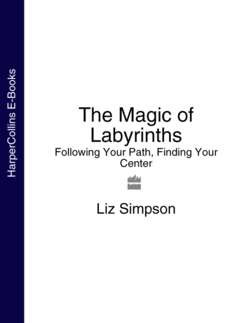Читать книгу The Magic of Labyrinths: Following Your Path, Finding Your Center - Liz Simpson - Страница 14
Snake-like Imprints
ОглавлениеThen there is a tale that comes from Arnhem Land in Australia’s Northern Territory which is the aboriginal equivalent of the Biblical story of Noah’s flood – only, as in many non-Christian examples, the story involves female protagonists, not a male one. Two sisters, one already a mother and the other pregnant, are forced to leave their home and begin to journey north. As they travel they give names to everything they see, bringing the stone animals, plants and insects to life. These women belonging to the Wagilag clan, camp alongside the Mirarrmina watering hole, unaware that it is the sacred home of the Giant Python, Wititj.
Angry at being disturbed, Wititj sucks up all the water and spits it out to form monsoon clouds that break and flood the land. The sisters begin to perform songs and dances in order to divert the waters. But the serpent swallows them and their offspring whole, raising himself into the sky to escape the deluge. In the heavens, he is admonished by his ancestors and they tell Wititj that he should not have swallowed all members of the same family. The great snake becomes ill and crashes to the ground, leaving a labyrinthine imprint in the earth, whereupon he spits out the women and children. Wagilag men who have followed them, learn of the songs and dance rituals performed by the women to halt the flooding and these are enacted during the monsoon season to ensure the continuation of nature’s cycles.
In Arnhem Land, the giant python Wititj was said to be responsible for the cycle of the seasons.
